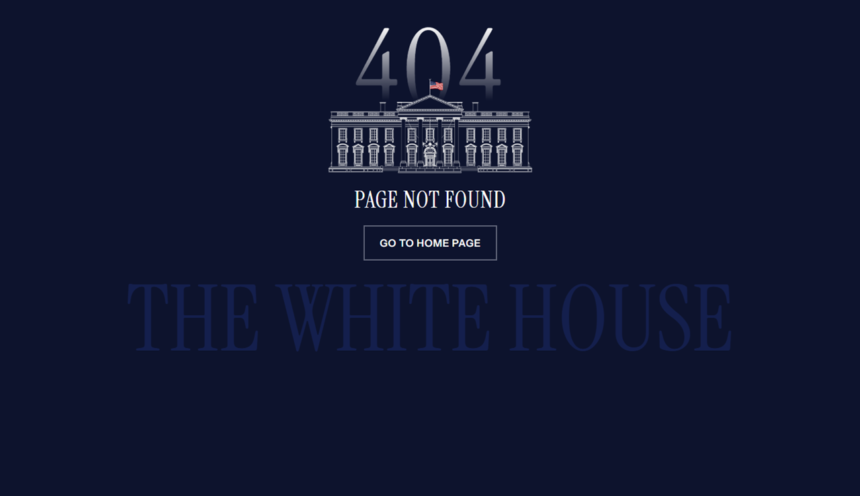In a move that has generated intense public debate, the U.S. government closed the Spanish version of the official White House website, just as Donald Trump began his second term.
When trying to access, users are met with an “Error 404” message, with no redirections or additional information in this language. This had already occurred at the beginning of Trump’s first term in 2017 and has reignited the discussion about the role of Spanish in a country with a growing Spanish-speaking population.
The importance of the Spanish-speaking population is evident: The United States is the country with the second largest number of Spanish speakers in the world, second only to Mexico. According to the “Instituto Cervantes Yearbook 2023,” approximately 62.5 million people in the United States are of Hispanic origin, and an estimated 41.2 million speak Spanish as their native language. In addition, it is projected that by 2060, 27.5% of the U.S. population will be Hispanic, consolidating the country as a language hub in the Western Hemisphere.
Spanish also occupies a prominent position in the educational and economic spheres. It is the most studied foreign language in the U.S. educational system, with more than 7.3 million students in primary and secondary schools. From an economic point of view, the Hispanic community would have, if it were an independent country, the fifth largest economy in the world, according to the Cervantes Institute report. These data reinforce the relevance of the language not only as a communication tool, but also as a cultural and economic asset.
Reactions to the government’s decision
The closure of the Spanish-language page has sparked criticism from various quarters. Chuck Schumer, leader of the Democratic minority in the Senate, described the measure as an obstacle to access to government information by millions of U.S. citizens who prefer or need to communicate in Spanish. According to Schumer, “eliminating this resource does nothing to reduce government costs, but significantly limits inclusion.”
On the other hand, organizations such as The Hispanic Council have reminded that Spanish is a key tool for civic integration and participation in the United States. Recent political campaigns, including President Trump’s team, have relied on the Spanish language to attract Hispanic voters, underscoring the importance of the language in the country’s political landscape.
The closure of the Spanish-language version also raises questions about digital inclusion. According to data from the Cervantes Institute, Spanish is the third most used language on the Internet, after English and Chinese, with 7.9% of global users communicating in this language. In a country where more than 18% of the population identifies as Hispanic, the lack of Spanish-language options on government digital platforms could hinder access to essential services.
In comparison, previous administrations had strengthened efforts to promote the use of Spanish on official portals and networks. For example, during Barack Obama’s presidency, the White House not only maintained a Spanish version of its website, but also active social media accounts to communicate with this population.
The debate over the White House Spanish page reflects a broader tension around the role of migrants in U.S. culture and how the new administration of Donald Trump has approached the debate. One factor that shows the nature of American culture is that the United States has no official language at the federal level, although English dominates in the public and political spheres. The growing Spanish-speaking population challenges this dynamic, especially in states such as California, Texas and Florida, where Spanish is essential in sectors such as education, healthcare and commerce.
Globally, Spanish continues to expand as a language of international communication. With more than 599 million potential users, its presence in the digital and academic world continues to grow. This underscores the importance of developing public policies that recognize and support its use in multilateral contexts.
Hopefully the episode of the temporary shutdown of the White House website only stems from technical problems and is not a veiled message from the Trump administration about the supremacy of English over the other several languages spoken in the majority of American households.
Whit information from AFP











